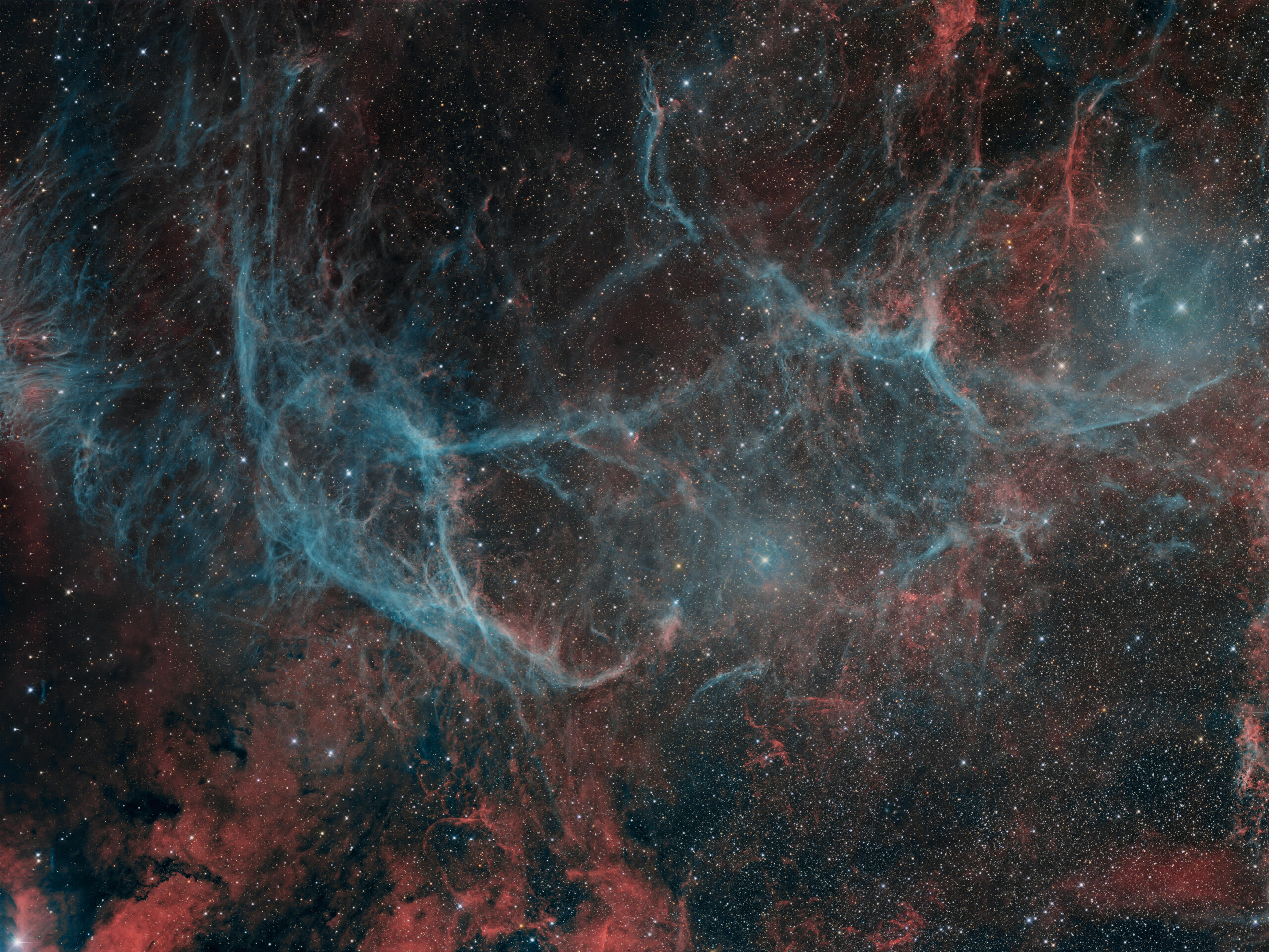
Vela Jr. Supernova Remnant, catalogued as RX J0852.0−4622 (also known as G266.2−1.2), located in the southern constellation Vela.
This is one of the youngest and closest supernova remnants known in our galaxy—just 650 to 1,000 light-years away—and spans about 2 degrees of sky, which is roughly four times the width of the full Moon.
This remnant was discovered in 1998 through X-ray observations by the ROSAT satellite, revealing a faint shell hidden behind the much older and brighter Vela Supernova Remnant. The surprise detection was followed by gamma-ray observations that found titanium-44 decay, confirming that this was the remnant of a relatively recent supernova explosion—likely just 700 to 1,000 years ago.
Despite its proximity and youth, there are no known historical records of a visible supernova at this location, possibly due to dust obscuration.
In this image, the faint blue filaments trace shockwaves rich in doubly ionized oxygen (OIII), while the reddish glowreveals areas dominated by ionized hydrogen (H-alpha). These glowing structures are the remnants of a massive star’s death, still racing outward through space.
Imaged in HOO RGB on my Planewave DR 350 at Observatorio El Sauce, Chile.
Image acquisition and processing: Mike Selby